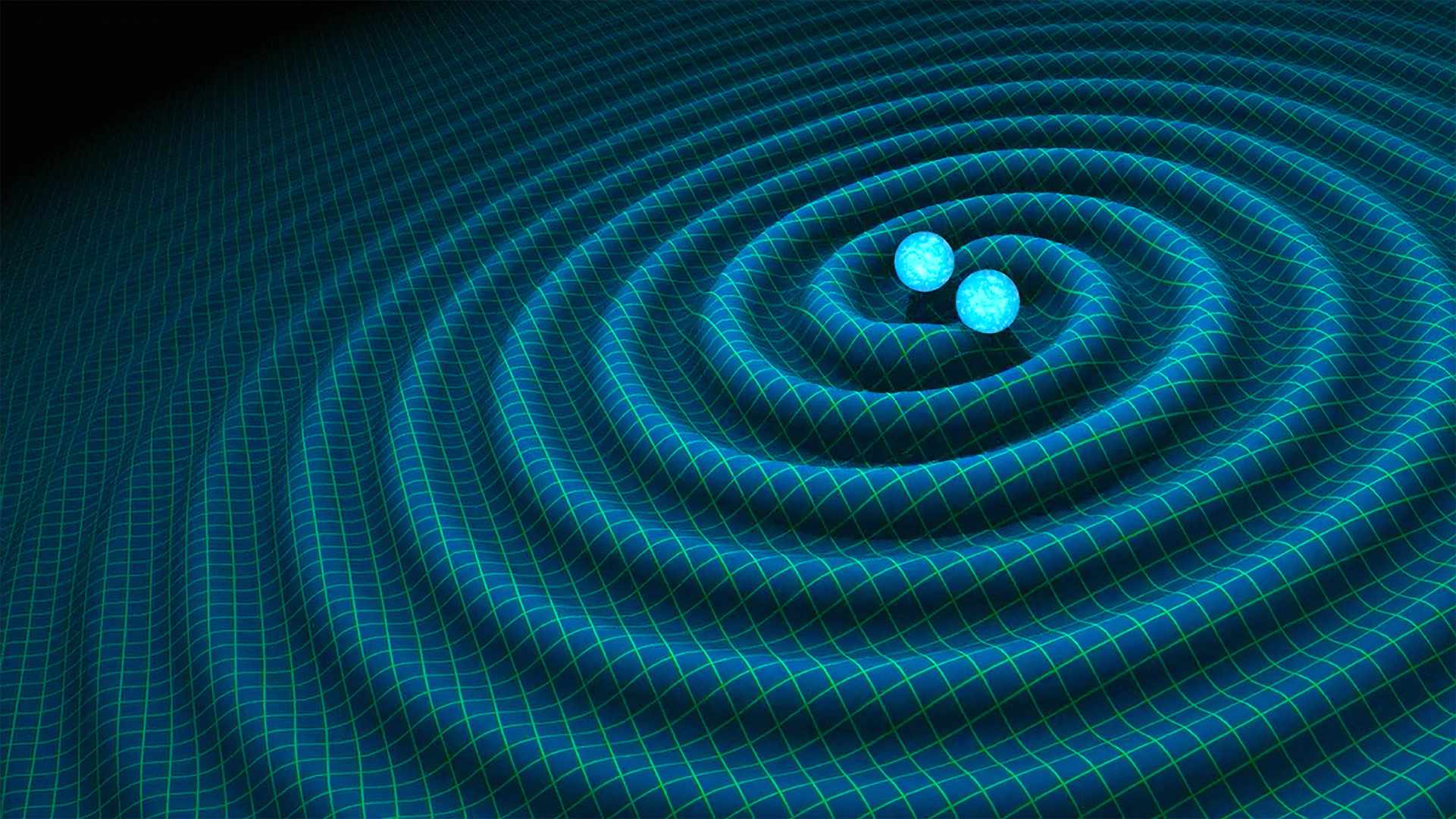Gravitational-Wave Hunters Surf to Top Science Magazine Award

One of the world's top scientific magazines has awarded its highest yearly honor to an experiment searching for ripples in the fabric of the universe.
Science magazine bestowed its 2016 Breakthrough of the Year Award upon the collaboration of scientists who built and operate the Laser Interferometer Gravitational Wave Observatory (LIGO), the journal announced today (Dec. 22). This is one of many awards and recognitions that the collaboration and its scientists have already won.
Gravitational waves were first predicted by Albert Einstein in 1915, but it took a century to procure the first-ever direct detection of this cosmic phenomena. In February of this year, the LIGO collaboration announced the first-ever direct detection of these space-time ripples, which were created by two colliding black holes.[Gravitational Waves Detected by LIGO: Complete Coverage]
Among other great achievements, Einstein discovered that space and time are not separate, but rather create a single, universal fabric that everything in the cosmos moves through. Massive objects bend that fabric, like a bowling ball bends a trampoline, thus creating gravity. Massive objects moving through space-time can even create ripples, and LIGO detected two separate signals (the second announced in June) of such waves. The ripples came from a pair of black holes circling each other and eventually merging into a single entity.
The changes in space created by gravitational waves are extremely small, and the LIGO instruments have been described as the most precise measuring devices ever built. That's part of the reason why it took so long to directly detect these waves. (Indirect evidence of gravitational waves was first discovered in the 1970s.)
"The discovery of ripples in space-time — gravitational waves — shook the scientific world this year," Science reporter Adrian Cho wrote in an article about LIGO explaining why the research earned the magazine's top honor. "But instead of the end of the story, scientists see the discovery as the birth of a new field: gravitational wave astronomy."
That's because the ability to detect gravitational waves gives astronomers an entirely new source of information about cosmic phenomena. Events and objects that do not release light may release gravitational waves, thus giving scientists a way to study those otherwise-invisible events. Gravitational waves can also provide totally new information about objects that do emit light, providing scientists with new insight into distant objects and energetic cosmic events.
Get the Space.com Newsletter
Breaking space news, the latest updates on rocket launches, skywatching events and more!
Two other magazines gave accolades to LIGO, and it earned a $3 million Special Prize in Fundamental Physics from the Breakthrough Prize Foundation. The journal Nature added LIGO spokesperson Gabriela Gonzalez to its list of "10 people who mattered in science," which comes out each year.
Follow Calla Cofield @callacofield.Follow us @Spacedotcom, Facebook and Google+. Original article on Space.com.
Join our Space Forums to keep talking space on the latest missions, night sky and more! And if you have a news tip, correction or comment, let us know at: community@space.com.

Calla Cofield joined Space.com's crew in October 2014. She enjoys writing about black holes, exploding stars, ripples in space-time, science in comic books, and all the mysteries of the cosmos. Prior to joining Space.com Calla worked as a freelance writer, with her work appearing in APS News, Symmetry magazine, Scientific American, Nature News, Physics World, and others. From 2010 to 2014 she was a producer for The Physics Central Podcast. Previously, Calla worked at the American Museum of Natural History in New York City (hands down the best office building ever) and SLAC National Accelerator Laboratory in California. Calla studied physics at the University of Massachusetts, Amherst and is originally from Sandy, Utah. In 2018, Calla left Space.com to join NASA's Jet Propulsion Laboratory media team where she oversees astronomy, physics, exoplanets and the Cold Atom Lab mission. She has been underground at three of the largest particle accelerators in the world and would really like to know what the heck dark matter is. Contact Calla via: E-Mail – Twitter









